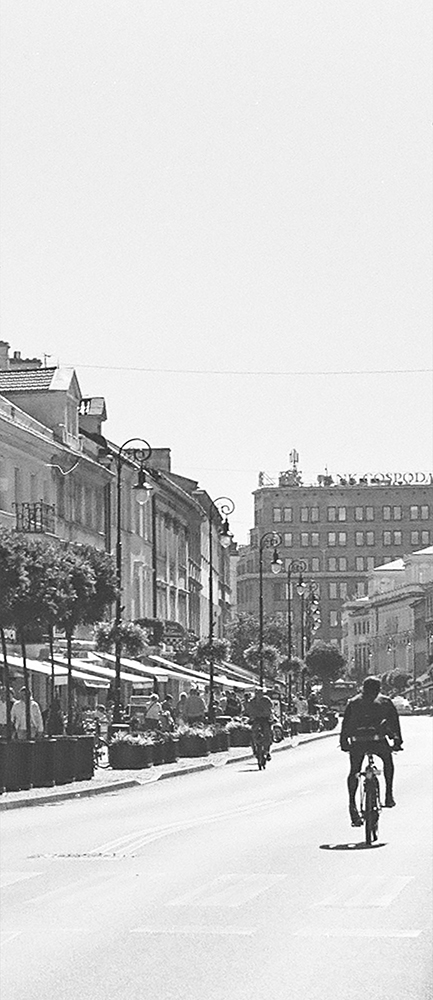
Nowy Świat Street
(New World street) - one of the most representative streets of Warsaw, situated between Krakowskie Przedmieście street and de Gaulle roundabout
Each person coming to Warsaw should visit this place. Today, Nowy Świat is no longer the same as before World War II - more than 90% of it was in fact destroyed and rebuilt – but it still serves as one of the most important streets in the centre of the capital. It is here where you can find numerous boutiques, restaurants, famous pastry shop Blikle and the legendary Pawilony - a symbol of urban folklore.
The precise origin of the street name is unknown. It is believed that it comes from the seventeenth century Jurydyka Nowoświecka – a private town inhabited by nobles and clergy which existed in this location. It was here that the new world began - the border of Warsaw, outside of which awaited undiscovered wilderness.
The development of Jurydyka Nowoświecka, and also other neighbouring towns like Tamka or Ordynacka (these names also became names of future streets) – meant that the vicinity of present Nowy Świat began to be built up by brick palaces and tenements, and the gravel surface was covered with pavement. In the eighteenth century Nowy Świat area was incorporated into Warsaw; it was also at that time that the today's street name took roots.
Nowy Świat flourished in the nineteenth century. It was at that time that the street became the real salon of Warsaw. A saying was coined in those days: If you want to meet your friend, whom you have not seen for years, stroll through Nowy Świat twice, and you'll meet him for sure. Beside your friends, among the upscale houses - entertainment venues, cafes or hotels - you could also meet celebrities from politics and artistic bohemia.
The Second World War brought real drama to Nowy Świat. At one end of the street - in the Zamoyski Palace – Warsaw Defence Central Command was located. Therefore, from the first days of the war the area was subjected to German attacks and bombardment. Of the 71 original buildings, only 6 survived the war.
After the war the street was rebuilt, but it lost its exclusive character, becoming one of the arteries of passage for cars and public transport. Only in 1996 Nowy Świat underwent a major renovation. The street was made into a pedestrian area and returned to its original function.
Nowy Świat is closed to passenger cars. Access is allowed only to emergency vehicles, taxis and buses.
Do you know?
- In the past there were street-cars on Nowy Świat. The last tracks were dismantled however, after the war in 1949.
- One of the apartments in the palace at Nowy Świat 67/69 was rented once by a younger sister of Frederic Chopin, Izabela.
- At Nowy Świat 35, a pastry shop Blikle, famous for its doughnuts has been operating since 1869. One of its regular customers was no one else but the future president of France, Charles de Gaulle, who as a young officer was stationed in Warsaw on a military mission.
- Before World War II Nowy Świat there was a famous artistic café Pod Picadorem, in which leading Polish poets of the inter-war period met, including Jan Lechon, Antoni Słonimski and Julian Tuwim. The latter lived at the New World, in a building number 25.
- During World War II the street was briefly in the hands of the Warsaw insurgents. Manhole canals at the corner of Nowy Świat and Warecka street served to evacuate the soldiers who fought in the Old Town area.
- The pharmacy at Nowy Świat 18 contains authentic furniture from the period before World War II. You can see them by visiting the pharmacy.
- Near Nowy Świat, in the courtyard near the de Gaulle roundabout, there is a group of improvised pubs, once serving the function of craft shops called the Pavilions. Pavilions today are the symbol of Warsaw folklore. They are visited every day by masses of Varsovians and tourists.
- Nowy Świat does not end at the intersection with Świętokrzyska street. The street continues, merging smoothly with the Krakow Suburb, near the monument of Nicolas Copernicus.






